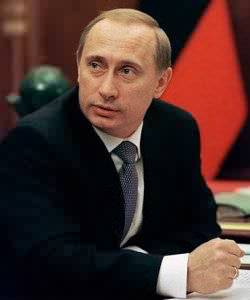
KREMLIN WOULD RE-WRITE OR KILL CFE TREATY
Publication: Eurasia Daily Monitor Volume: 4 Issue: 139
By:

On July 14 Russia notified the 29 other state parties to the 1990 Treaty on Conventional Forces in Europe (CFE) as well as other countries of Russia’s decision to suspend its participation in the Treaty. The suspension would take effect 150 days after the notification.
The Treaty, signed in 1990 and in force since 1992, stipulates an advance notice of 150 days for quitting the treaty outright. It does not allow “suspending” participation or declaring a “moratorium” on compliance, as Russia describes its move. Thus, Russia is placing itself in violation of the treaty in a legal sense and would be violating it in practical terms as well if it proceeds with the unilateral moratorium on compliance with the treaty’s terms after the 150-day notification period.
President Vladimir Putin ordered the suspension and pre-notification by decree on July 13. The move also applies to follow-up documents to that Treaty: the Flank Document (signed in 1990 and modified in 1996-97 in Russia’s favor, raising force ceilings in the North Caucasus) and the 1999-adapted CFE Treaty, ratified in 2004 by Russia but not ratified by NATO countries.
An explanatory document from Russia’s presidential administration enumerates the following reasons for suspending compliance with the treaty:
1) NATO countries’ requiring the withdrawal of Russian troops from Georgia and Moldova as a condition to ratifying the 1999-adapted treaty. The Russian presidential administration’s document describes this linkage “illegitimate” and “invented,” and the troop-withdrawal issue a bilateral Russia-Georgia and Russia-Moldova issue.
In reality, those troop-withdrawal commitments form an integral part of the CFE Treaty Conference Final Act within the 1999 Istanbul package. That linkage forms a cornerstone of Western policy. With Russian troops now abandoning two bases in Georgia, Moscow apparently hopes that the other state parties to the treaty would tolerate the Russian troops in Moldova and ratify the treaty regardless.
2) With the 1990 CFE Treaty not covering the three Baltic states [they were still Russian-occupied at that time] and the 1999-adapted treaty unratified, Russia wants speedy ratification and accession of the Baltic states to a ratified treaty, hoping to restrict emergency deployments of allied forces there. The absence of such restrictions could “negatively affect the fulfillment of Russia’ political obligations of military restraint in Russia’s northwest.”
This is a double warning that Moscow might increase its forces in the proximity of the Baltic states, breaking out from Flank ceilings. And it hints that “political obligations” are not legally binding ones, in OSCE and CFE treaty parlance.
3) The treaty-limited equipment (four categories of combat hardware) of NATO’s new member countries has “increased the overall holdings” of such equipment within NATO since the alliance’s 1999 and 2004 enlargements. Consequently, Russia demands a “compensatory lowering” of overall NATO numerical ceilings on such equipment.
This retroactive demand ignores the massive scrapping of treaty-limited equipment that has occurred since 1999. It also seems designed to divide NATO’s old and new member countries, apparently hoping to trigger negotiations toward redistribution of quotas among countries of the alliance.
4) The planned basing of U.S. military units in Romania and Bulgaria “negatively affects” those countries’ compliance with the CFE Treaty’s force ceilings.
Moscow is raising this issue for nuisance value, angling for favorable consideration of Russia’s position on unrelated European security issues. In reality, those U.S. units are rotational ones, not bases. They are light, air-mobile forces for possible expeditionary missions outside the CFE Treaty’s geographic area. Last month, Moscow publicly turned down a Romanian confidence-building offer to host a tripartite U.S.-Romanian-Russian exercise.
5) Without citing any specific threats to Russia, the presidential administration’s document demands a “removal” (otmena) of Flank ceilings on Russian forces by “political decision” between NATO and Russia, ostensibly to “compensate” Russia for the alliance’s enlargement.
With southern Flank ceilings already raised in the North Caucasus a decade ago, Russia apparently seeks outright removal of ceilings on its forces on both the southern and the northern Flanks — or alternatively pulling the Baltic states into a northern Flank zone that would straddle Russia’s border with the Baltic states.
6) Russia wants to re-negotiate and “modernize” the 1999-adapted CFE treaty as soon as it is brought into force. But it would proceed unilaterally to suspend the treaty’s validity unless NATO countries bring it into force by July 1, 2008, or at least comply with its terms on a temporary basis, pending the treaty’s re-negotiation.
Thus, Moscow’s demand for ratification serves as a prelude to burying the treaty legally through total re-negotiation in Russia’s favor or burying it de facto through unilateral Russian withdrawal from the treaty.
A parallel explanatory note, this one from Russia’s Ministry of Foreign Affairs, specifies the practical consequences of Russia’s suspension of compliance with the treaty, should such a “moratorium” take effect 150 days upon the notification. In that case, Russia would not be bound by any quantitative ceilings on its conventional forces during the period of suspension. Russia would “temporarily” withdraw from both CFE treaties’ systems of mutual monitoring and exchanges of information. It would not accept inspecting teams on Russian territory and not pre-announce Russian troop movements. Moreover, Russia would not be bound by Flank limitations (phrased as: “Limitations on Russian forces in any part of our territory no longer make any sense”).
Russia’s policy on the CFE Treaty and related issues has undergone a sea change. The policy until some months ago, while unacceptable in the West and Europe’s East, was a simple one: Russia wanted ratification of the adapted treaty and accession of the Baltic states to it while keeping its troops in Georgia and Moldova. At present, however, Russia wants a comprehensive re-negotiation of the same CFE Treaty — practically re-writing it in Russia’s favor — while threatening to break out from the treaty altogether if its demands are not met.
Putin first threatened a “moratorium” in his April 26 address. Moscow then raised most of its demands for rewriting the treaty during the Extraordinary Conference of States Parties to the Treaty on Conventional Forces in Europe, held in Vienna on June 11-15 at Russia’s initiative. These moves, as well as the Kremlin’s July 14 pre-notification of a “suspension” to force the treaty’s “modernization,” bear the hallmarks of political bluffs.
They are to be viewed in two wider political contexts, indirectly related or unrelated to the CFE Treaty itself. First, Russia is raising a wide range of international security issues at one and the same time — CFE, anti-missile defense, the INF treaty, U.S. military installations in Romania and Bulgaria, Kosovo, — in attempting to draw the United States and NATO into at least one trade-off on which Russia could win. Second, Russia is campaigning to re-write an even wider range of agreements, dating back to the 1990s and including major energy contracts.
Russia almost certainly realizes that it would lose a conventional arms race with the West in the CFE Treaty-limited categories that matter in contemporary Europe. Tanks no longer matter as they still did in post-Soviet territories during the 1990s. If Russia intends to rebuild its conventional forces from its growing energy revenues, it would emphasize modern mobile forces, potentially more dangerous to neighbor countries than Soviet heavy armor was.
(Russian presidential administration and Ministry of Foreign Affairs: decree and explanatory notes, Interfax, July 14; see EDM, May 25, June 8, 11, 13, 14, 18)




